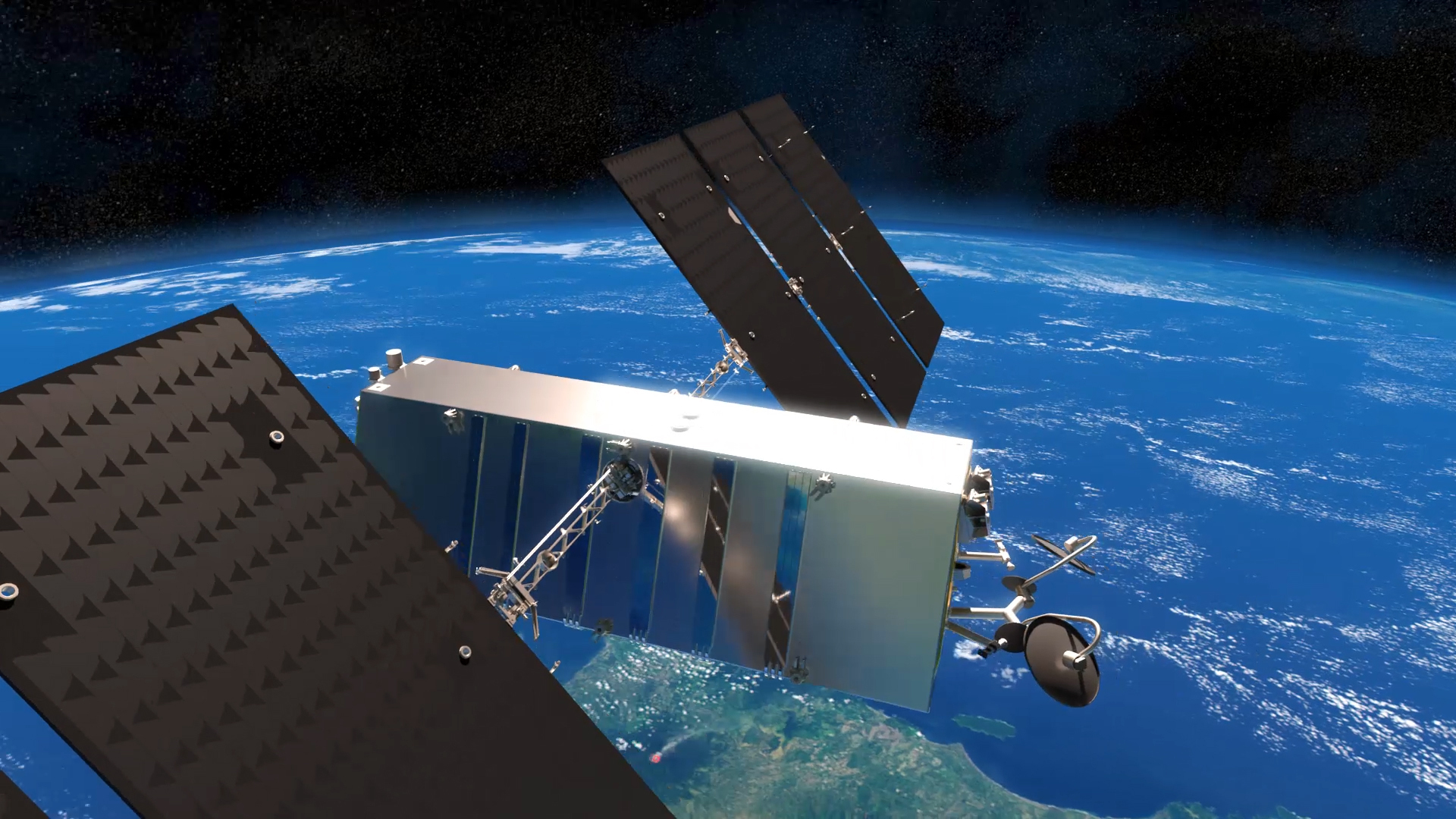TAMPA, Fla. — Telesat could start a spectrum auction to help fund its $5 billion Lightspeed low Earth orbit constellation “in a couple of months” if Canada’s government approves its proposal, according to CEO Dan Goldberg.
Canada is considering proposals on how to release satellite C-band spectrum in the country for terrestrial 5G wireless networks, after a sale in the U.S. raised more than $81 billion.
The Canadian government has plans to sell adjacent spectrum in the 3.5 GHz band by the end of June, suggesting a decision on releasing C-band will come before then to give bidders a better picture of the nearby spectrum environment.
Telesat proposes running the sale of its C-band sale itself, much like satellite operators requested for in the U.S.
On a May 14 conference call following financial results, Goldberg said the operator has already been laying the groundwork with external auction experts, enabling it to move quickly with its plan if regulators approve it.
“It would take us probably some months just to make sure that we reflected all the different requirements, restrictions and whatnot that the regulator would invariably articulate as part of it,” he said.
In terms of how quickly it could get cash in the door for monetizing the 200 MHz of spectrum, Goldberg said it is too early to tell whether the frequencies would first need to be cleared.
The U.S. Federal Communications Commission (FCC) ultimately decided to run the C-band auction, which kicked off late last year. Part of the proceeds of the sale it completed in February will reimburse satellite operators for the costs of clearing the spectrum, after they clear it, and to incentivize them to do so quickly with various deadlines.
Satellite operators Intelsat and SES, which hold the majority of C-band in the U.S., recently said they are on track to secure more than $2 billion combined from hitting a clearing deadline in December.
Goldberg said Telesat is also on course to hit its C-band clearing targets in the U.S., generating around $300 million in total to partly fund Lightspeed.
Lightspeed has also racked up about 1 billion Canadian dollars in combined funding from Canada’s federal government and Quebec’s provincial government to date.
Lightspeed growth
Telesat secured a $500 million bond in April as part of a debt package that will fund 60% of Lightspeed’s cost. It is still in talks with export credit agencies (ECAs) about raising more debt to back the project.
“We are in what I would describe as very advanced discussions with the export credit agencies about the terms under which they would fund the program,” Goldberg said.
Equity will finance the remaining 40% of the project.
Lightspeed will be an important part of Telesat’s growth story for investors, according to Goldberg, as it prepares to put its shares on the public markets in the third quarter of this year.
He said about 25% of Telesat’s current geostationary orbit (GEO) business could be served better from satellites in LEO.
COVID-19 impacts on commercial aero and maritime markets dragged Telesat revenues down 6% to 190 million Canadian dollars for the first quarter of 2021, compared with the same period in 2020 when adjusted for foreign exchange rate changes.
Adjusted EBITDA, or earnings before interest, taxes, depreciation and amortization, fell 5% to 152 million Canadian dollars.
Before the pandemic, Goldberg said aero and maritime represented about 10% of its commercial business and is now “a little bit lower, given COVID.”
However, he is optimistic this will bounce back as the pandemic subsides.
He said “for sure, when our customers in the aero and maritime market, particularly the cruise market, are back in full swing, that’s got to have tailwinds for us.”
LEO launches
Europe’s Thales Alenia Space is building Lightspeed satellites, managing network software and gateway integration, in a $3 billion contract.
Telesat has early arrangements to start launching nearly 300 satellites for the constellation next year, for services to begin in 2023.
It has lined up Blue Origin and Relativity Space, which have yet to conduct an orbital launch, and Goldberg said it is in talks with others that he expects to announce this year.
He said he is confident Blue Origin will be up and running by the time it needs to launch.
“For us, we have real conviction that they’re going to be in the game when we need them to be in the game,” Goldberg said.
The New Glenn rocket Blue Origin is developing could launch around 30 of its satellites at a time, he said, depending on the orbit. SpaceX could launch 15-16 satellites to an inclined orbit on a Falcon 9 and “something like 13” to a polar orbit.
Launches will happen “around two years time,” he added.
Eying up the competition
That puts it behind the megaconstellations SpaceX and OneWeb are actively deploying.
But Goldberg said that unlike SpaceX’s Starlink, Lighspeed will focus on enterprise customers and not the consumer market. Unlike OneWeb, which is going after a similar market, he said Telesat has focused on the enterprise sector from the start.
He said if Telesat “from day one were focused on the consumer market, our constellation architecture would look different … if you want [to build] a constellation to efficiently address one you’re almost by definition trading off your ability to efficiently address the other.”
The company never expected to enter the LEO market without any competition, Goldberg added.
“We’ve been operating in a highly competitive environment for decades now and I don’t expect the future to be any different,” he said.
“This is not going to be a ‘winner take all’ game.”
Meanwhile, Telesat continues to explore options for satellites in its GEO fleet that are coming up for replacement as they near the end of their operational lives.
“Provided that we’ve got a good business case to replace those satellites then we’ll certainly allocate some of the cash that … should be building up at Telesat Canada for those purposes.”
